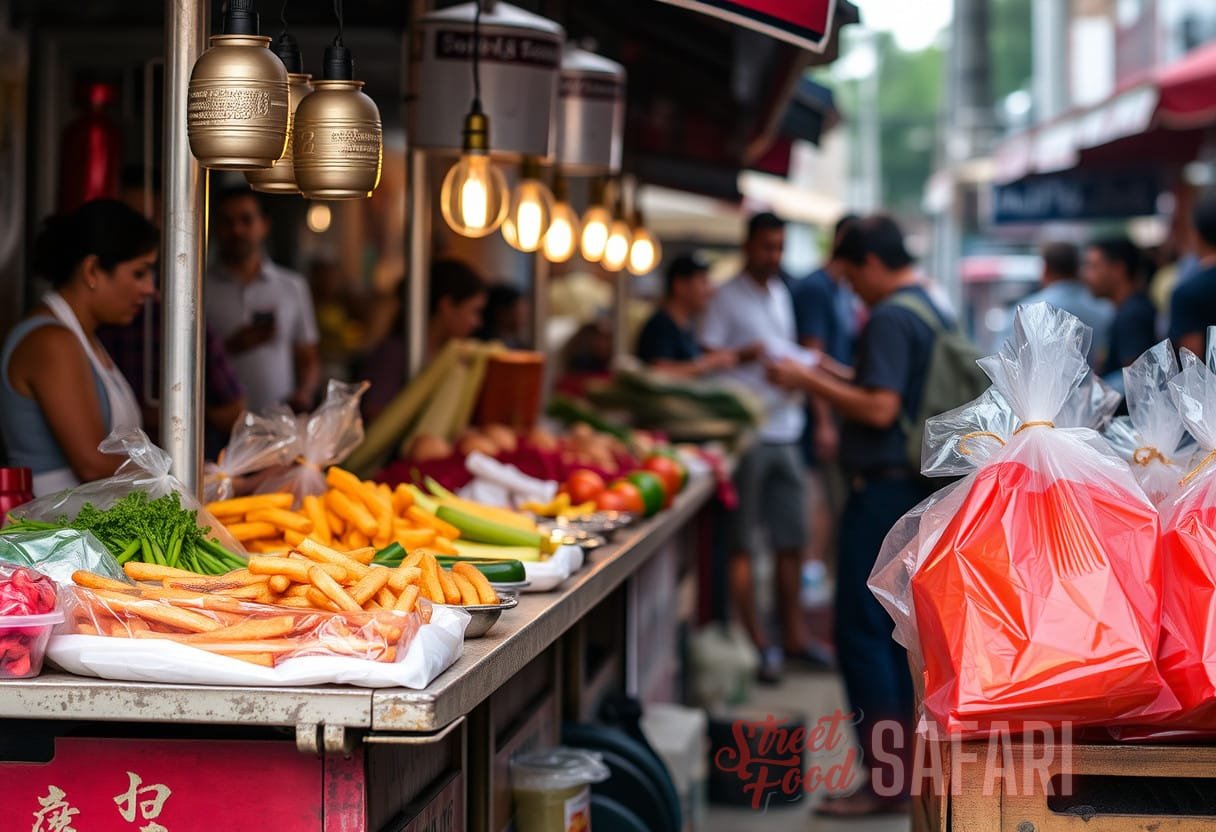Sit back, relax, and let’s take a journey through the vibrant world of street eats!
Street food has long been an essential part of the culinary landscape in countries around the world. From the sizzling street stalls of Bangkok to the bustling food markets of Mexico City, street eats offer a unique and flavorful glimpse into the culture, cuisine, and community of a place. In this article, we will explore the intersection of culture, cuisine, and community when it comes to street eats and dive deep into the mouthwatering world of street food.
1. The History and Evolution of Street Eats
Street food has been a part of human civilization for centuries. In ancient Rome, for example, street vendors known as “tabernarii” sold a variety of foods on the streets of the city. From there, street food spread across the globe, adapting to local tastes and traditions along the way.
In the modern era, street food has experienced a resurgence in popularity. Food trucks, for instance, have become a cultural phenomenon in cities across the United States. These mobile kitchens, serving dishes ranging from gourmet burgers to fusion cuisine, have gained a loyal following and have become an integral part of the food scene.
The rise of social media has also played a significant role in the popularity of street eats. Food enthusiasts now have the ability to share their discoveries with the world, creating a sense of excitement and curiosity around street food culture. Thanks to platforms like Instagram and YouTube, street food vendors have gained global recognition and have become foodie destinations in their own right.
2. Discovering the Rich Cultural Significance of Street Eats
Street eats are more than just a quick and tasty meal. They often reflect the history, traditions, and multiculturalism of a place. Whether it’s the aromatic spices used in Indian street food or the fresh seafood found in coastal cities, street eats offer a delightful insight into a country’s culinary heritage.
According to Wikipedia, street food is deeply rooted in cultural and historical contexts, with each dish telling a unique story. For example, the popularity of hot dogs in New York City can be traced back to German immigrants who brought their love for sausages to the United States. Today, hot dogs are a beloved street food staple in the Big Apple.
In many parts of the world, street eats also serve as a form of social glue, bringing people from different walks of life together. In cities like Singapore and Bangkok, hawker centers and night markets act as communal gathering spaces, where locals and tourists alike can bond over a shared love of food.
Furthermore, street eats often provide economic opportunities for marginalized communities. Street vendors, many of whom are immigrants or small-scale entrepreneurs, rely on the income generated from their food businesses to support themselves and their families. In this way, street food becomes a means of empowerment and economic mobility for those who may not have access to traditional job opportunities.
3. Exploring the Culinary Delights of Street Eats
Now, let’s dive into the world of flavors and mouthwatering delights that street eats have to offer. Here are some popular street food dishes from around the globe:
a) Pad Thai (Thailand)
A trip to Thailand wouldn’t be complete without indulging in a plate of Pad Thai. This iconic stir-fried noodle dish, typically made with rice noodles, shrimp or chicken, tofu, eggs, and a tangy tamarind sauce, is a staple of Thai street food.
b) Tacos al Pastor (Mexico)
Mexico is home to a wide array of delicious street eats, but one that stands above the rest is Tacos al Pastor. This mouthwatering dish features marinated pork cooked on a vertical spit, similar to the technique used for shawarma. The tender, flavorful meat is then served on a warm tortilla and topped with pineapple, cilantro, onions, and a squeeze of lime.
c) Banh Mi (Vietnam)
Banh Mi, a Vietnamese sandwich, is a perfect fusion of French and Vietnamese flavors. The crusty baguette is filled with a combination of grilled meats, pickled vegetables, herbs, and spicy sauces, creating a harmonious balance of sweet, savory, and tangy flavors.

d) Churros (Spain)
No trip to Spain would be complete without indulging in some piping hot churros. These deep-fried dough sticks, dusted with sugar and often served with a side of chocolate sauce for dipping, are a beloved street food treat in Spain and beyond.
4. The Power of Street Eats in Building Community
Street eats are not just about delicious food. They also play a significant role in building and strengthening communities. Here are a few ways street eats foster community connections:
a) Shared Spaces
Street food markets, hawker centers, and night markets often act as gathering spaces where people can come together to enjoy a meal and connect with their neighbors. These communal spaces foster a sense of belonging and create opportunities for social interaction.
b) Cultural Exchange
Street food vendors often bring their traditional recipes and culinary techniques from their home countries. This cultural exchange through food allows people to experience and appreciate different cultures and traditions, fostering cross-cultural understanding and appreciation.
c) Supporting Local Economy
By patronizing street food vendors, locals and tourists alike can contribute to the local economy. Money spent on street food goes directly to the vendors, supporting their livelihoods and helping to sustain their businesses.
5. The Future of Street Eats
The future of street eats is as diverse and dynamic as the streets themselves. As the world becomes more connected and diverse, street food will continue to evolve, incorporating new flavors, techniques, and ingredients.
However, there are also challenges that street eats face. Regulatory issues, health and safety concerns, and gentrification can threaten the survival of street food culture. It is important for policymakers and communities to find a balance between regulating street food to ensure public health and safety while still preserving the authenticity and vibrancy of these culinary traditions.
Internal Link Example 1:
To learn more about the cultural significance and delightful flavors of street eats, check out this article.
Internal Link Example 2:
If you want to uncover the cultural significance behind irresistible street food delights, read this insightful article.
The world of street eats is a vibrant tapestry of flavors, cultures, and communities. Whether you’re exploring the street food stalls of Bangkok, the food trucks of Los Angeles, or the night markets of Marrakech, street eats offer a truly unique and immersive culinary experience. So, the next time you find yourself in a new city or country, don’t be afraid to venture off the beaten path and discover the delicious world of street eats!



